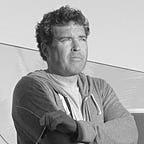Definitions of Text-Based Art and Word Art
A start: Defining text art through all its histories and all its types across cultures, continents, and times.
Or: Notwithstanding most art history accounts, text art history was not invented out of thin air in New York in the 1960s nor even in Europe a century before. Stay tuned for the research to back that up.
This subject will become several articles over time. Until then, some markers before today’s initial draft post:
- Is there a single definition of text art? Can there be? Should there be?
- Does text-based art have a different definition than word art?
- Should a definition of text art be strictly a function of art history — or should it expressly consider linguistics, cultures, and philosophical presumptions of the given place where it is — and was — made?
- Can text-based art legitimately be limited to text art using only the English language and using only the predicates of Western thinking?
- Are definitions about word art only about what it is — or should definitions incorporate what word art can do, both how and why?
- Does text art need to be legible, clear enough to be read — or, as long as a piece is made by the act of lettering — or even the act of using text-word-sound-symbols, is it still within a definition of text art?
- If not, where is the line between use of language symbols and icon symbols, particularly where both are or were used by a culture to represent phonetic sounds upon which language arose or is based?
Stated differently, the posts comprising this overarching article will rebut the notion that the definition of text-based art is merely “art with text in it,” which is pretty close as a matter of logic to being circular, a tautology, and in other words a disservice to the dozens of cultures across continents that have created text art for the most important of reasons dating back thousands of years before conceptual artists started using it for iron. More about that in a later post.
Some examples, so far, of what defines text-based art and word art.
In text-based art, also known as art with words, artists and viewers additionally interact through visual language, not just images, objects, or sounds. Letters and words can be aesthetically pleasing all on their own, or they can contribute to meaning, or both. Text-based art can make art accessible, and allow for diverse interpretations, because it can inspire not only emotions but also views and thoughts. In art with words, artists have even more ways to express themselves, and viewers have even more ways to experience the artist’s work, because text-based art can not only inspire subjective feelings; it can also inspire objective discussions and dialogues amongst viewers, no matter where or how the text-based art is seen.
Here are some related text art definitions said another way:
- Text-based art has elements of a language as a significant part of the artwork;
- Text-based art can be words alone — or it can be with an image or object;
- Text-based can be purely aesthetic — or it can have semantic meaning — or both;
- Text-based art can inspire both thoughts and feelings;
- Text-based art can inspire new and diverse interpretations of images, events, or issues;
- Text-based art is interactive with viewers through both their minds and their hearts;
- Art with words is visual art or physical art that also has words;
- Art with words uses language to make a traditional artwork even more beautiful;
- Art with words can reach more diverse audiences, because it can be more accessible;
- Art with words can blend many types of art, not just visual and physical, but also literature and poetry.
This leaves for now some questions for pending research and analysis another day:
- What about people who speak other languages? Does text art in one language create language, cultural, or national exclusivity?
- In theory we can all of us, across all cultures and time, appreciate musical sounds, physical objects, and visual images — but what about images and objects that have words in them? Is text-based art inherently self-limiting?
- Or is there some concept of universal or omnibus language and meaning that text-based art reaches, that a language alone cannot? Does text-based art, or at least some of it, create a new type of language, a hybrid, not reliant exclusively upon agreed meaning from sounds, but from curves and lines too?
- The flip side of that, in a way: Is text-based art, or at least some of it, guidance, or even rules, for the placement of lines and curves? What if a painting looks abstract, but each mark of is a letter of a language loosely but correctly made?
- Thoughts and inquiries for another day. And there are more questions like this, but you start to see the point. Stay tuned.
— Adam Daley Wilson [draft August 2022 ready for editing]
